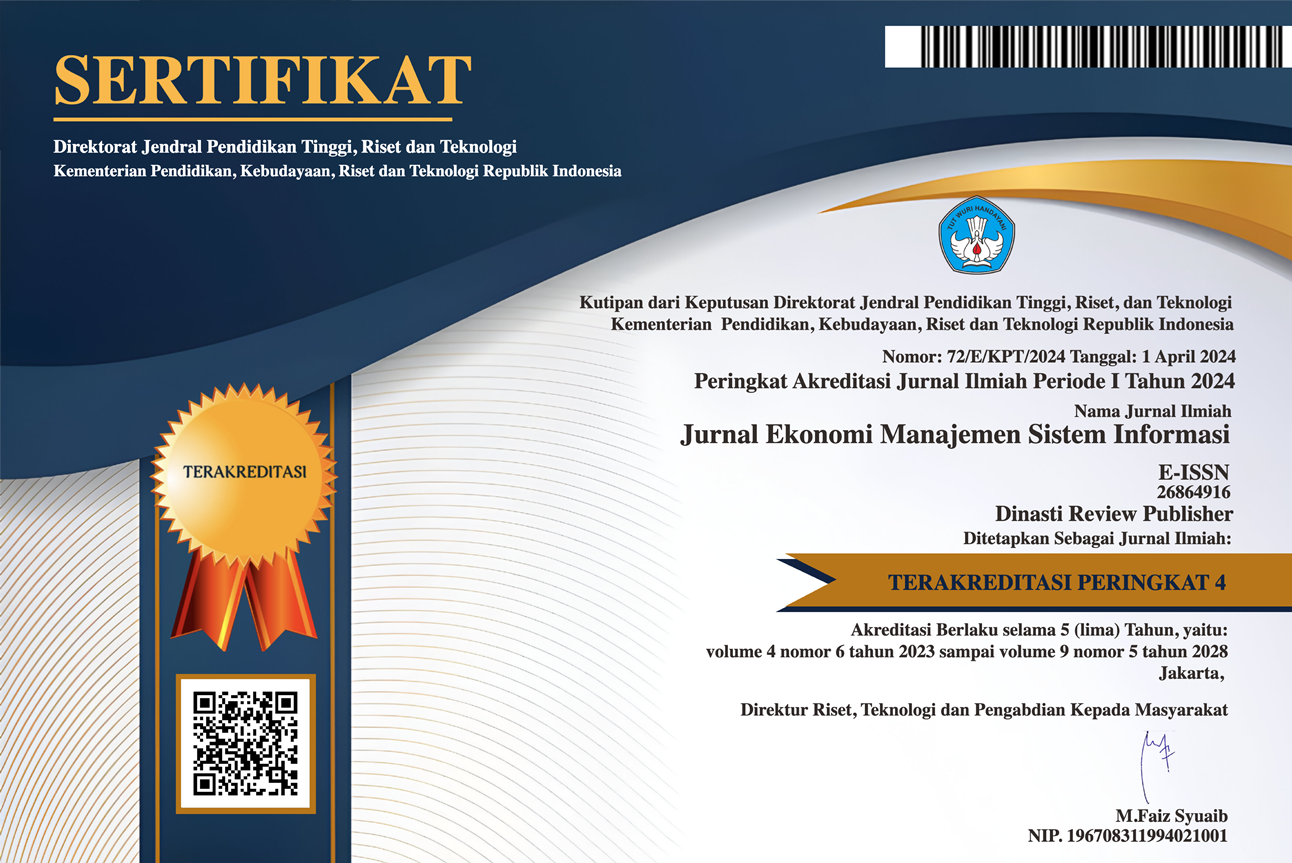Analisis Kerjasama Antara Anggota TNI dan Pemerintah Daerah Papua dalam Menangani Konflik di Papua
DOI:
https://doi.org/10.38035/jemsi.v6i1.2929Keywords:
Human Resource Management, Conflict Management, Conflict AreasAbstract
The province of Papua has long been affected by conflicts involving political issues, autonomy, ethnic diversity, natural resources, and human rights. This conflict began during the colonial period and continued after Papua became part of Indonesia in 1945, particularly following the 1969 Pepera, which many Papua residents deemed unfair. Violence in Papua persists with numerous casualties, reflecting a severe security situation. Conflict management efforts involve synergy between the TNI and local government, with the TNI focusing not only on security but also on social and economic development. Collaboration between territorial apparatus and local government is expected to create stability but often faces challenges such as differing task perceptions and support for separatist groups. This study employs a qualitative research method with a case study approach, using interviews and literature review to gather data. The findings indicate that handling the conflict in Papua requires strategic measures, including increasing the presence of Satuan Komando Wilayah (Satkowil) at each administrative level, such as Kodim in districts and Koramil in sub-districts. Kodim and Koramil play a crucial role in maintaining security and supporting local development and community welfare. It is also important to map various types of conflicts—armed, communal, and social—and adopt appropriate approaches. Satkowil/Apter serves as a communication bridge between local government and the community, assisting in policy implementation and addressing conflicts proactively. Effective collaboration between territorial apparatus and local government is expected to enhance stability and progress in Papua.
References
Bagyo, H. (1996). Perang Abad 21 dan Sishankamrata (Sistem Pertahanan Keamanan Rakyat Semesta). Gramedia Pustaka Utama.
Basrow, & Suwandi. (2008). Memahami Penelitian Kualitaitif. Rineka Cipta.
Burhan, B. (2007). Penelitian Kualitatif, Komunikasi, ekonomi, Kebijakan Publik, dan Ilmu Sosial Lainnya. Predana Media Group.
Kossay, P. (2011). Konflik Papua: akar masalah dan solusi. Tollelegi.
Mabes TNI. (2018a). Doktrin Tentara Nasional Indonesia Tri Dharma Eka Karma.
Mabes TNI. (2018b). Doktrin Teritorial Tentara Nasional Indonesia.
Mabesad. (2020). Doktrin TNI AD Kartika Eka Paksi.
Mardikanto, T., & Soebiato, P. (2018). Pemberdayaan Masyarakat Dalam Perspektif Kebijakan Publik. Alfabeta.
Moleong, L. J. (2018). Metodologi Penelitian Kualitatif. Penerbit PT Remaja Rosdakarya.
Muridan. (2018). Papua Road Map: Model Jangka Panjang Penyelesaian Konflik di Papua. LIPI Press, Indonesia.
Pekey, F. (2018). Papua Mencari Jalan Perdamaian: Telaah Konflik dan Resolusi di Bumi Cendrawasih. Kompas.
Tugas Bantuan TNI kepada Pemda, (2011).
Buku Putih Pertahanan Indonesia tahun 2015, (2015).
Ponto, S. (2014). Jangan Lepas Papua. PT. Rayyana Komunikasindo.
Samsudin, S. (2006). Manajemen Sumber Daya Manusia. CV Pustaka Setia.
Sesko TNI. (2024). Buku Pedoman Pembuatan Tesis Perwira Siswa Pendidikan Reguler Sesko TNI. Sesko TNI.
Sugiyono. (2014). Metode Penelitian kuantitatif, kualitatif dan R & D. Alfabeta.
Sugiyono. (2020). Metode Penelitian Kualitatif. Alfabeta.
Downloads
Published
How to Cite
Issue
Section
License
Copyright (c) 2024 Richard Arnold Yeheskiel Sangari

This work is licensed under a Creative Commons Attribution 4.0 International License.
Hak cipta :
Penulis yang mempublikasikan manuskripnya di jurnal ini menyetujui ketentuan berikut:
- Hak cipta pada setiap artikel adalah milik penulis.
- Penulis mengakui bahwa Jurnal Ekonomi Manajemen Sistem Informasi (JEMSI) berhak menjadi yang pertama menerbitkan dengan lisensi Creative Commons Attribution 4.0 International (Attribution 4.0 International CC BY 4.0) .
- Penulis dapat mengirimkan artikel secara terpisah, mengatur distribusi non-eksklusif manuskrip yang telah diterbitkan dalam jurnal ini ke versi lain (misalnya, dikirim ke repositori institusi penulis, publikasi ke dalam buku, dll.), dengan mengakui bahwa manuskrip telah diterbitkan pertama kali di Jurnal Ekonomi Manajemen Sistem Informasi (JEMSI).











































































